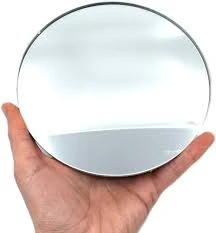

The Allure of Reflective Glass at Night
As daylight wanes and the sun dips below the horizon, a fascinating transformation occurs in urban landscapes. Reflective glass surfaces, once merely functional components of buildings, become captivating canvases, blending the surrounding environment with their shimmering reflections. This phenomenon not only enhances the beauty of a city at night but also serves as a testament to modern architectural design.
Reflective glass is a type of glazing that has a metallic coating, allowing it to reflect light while providing a degree of transparency. At night, when artificial lights illuminate the streets, some buildings adorned with reflective glass showcase stunning visual effects. The interplay of light and glass becomes a dance of colors, shapes, and reflections that can be mesmerizing. As people stroll through city streets, they are often drawn to the mirrored surfaces of skyscrapers, where the vibrant hues of neon signs, traffic lights, and street lamps are artfully captured.
One of the most striking aspects of reflective glass at night is its ability to create an illusion of depth. When the lights of the city reflect off the glass, they appear to extend into the building, making it look like a portal to a luminous world beyond. This quality can evoke feelings of wonder and curiosity. Passersby may find themselves stopping to admire the splendor, peering into the depths of the glass, which reflects not just the external environment but also the humanity bustling nearby.

Despite its aesthetic appeal, reflective glass brings with it a set of complexities. During the daytime, its shiny surface can create challenges for birds, leading to collisions. Architects and urban planners, therefore, must balance beauty with ecological considerations. Solutions such as using patterns on the glass or incorporating bird-friendly designs are emerging as ways to mitigate these risks while keeping the allure of reflective surfaces intact.
In addition to its visual impact, reflective glass also plays a vital role in energy efficiency. Modern buildings constructed with high-performance glass can reduce heat gain while allowing natural light to illuminate interior spaces. This energy efficiency is especially crucial at night when artificial lighting is most needed. Well-designed reflective glass installations can help maintain comfortable temperatures inside buildings, thus saving on energy costs and reducing the overall carbon footprint.
Furthermore, reflective glass doesn’t merely reflect lights and colors; it also reflects ideas. It stands as a metaphor for societal progress and innovation. As cities evolve and modernist architecture dominates skylines, reflective glass symbolizes a break from traditional designs, embracing sustainability and technology. It reminds us that urban environments can be beautiful while also being mindful of energy consumption and ecological impact.
In conclusion, the beauty of reflective glass at night transcends mere aesthetics; it represents a blend of art and function. By creating visually stunning effects and enhancing energy efficiency, reflective glass continues to shape our urban landscapes. As we walk through our cities after dark, the glimmering façades invite us to appreciate not only the architecture itself but also the dynamic life that surrounds it. This captivating interplay of light and glass is a charming reminder of the artistry inherent in modern design, illuminating our nights with a spectacle that inspires wonder and admiration.